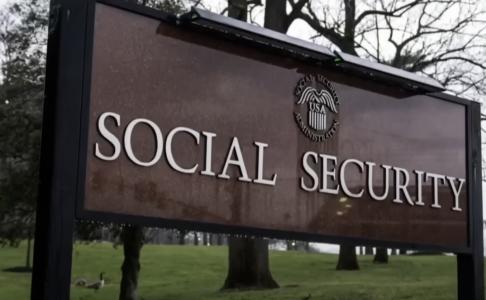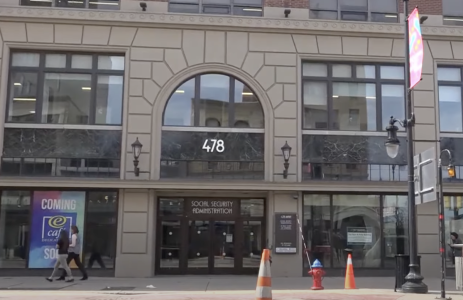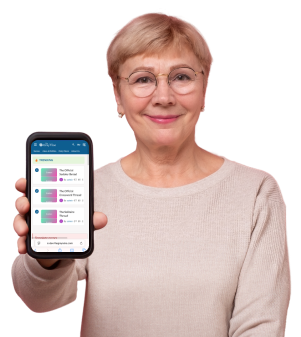Social Security announces big changes to protect your benefits—here’s what you need to know
By
Veronica E.
- Replies 2
Retirement should be a time of security and peace of mind—a chance to enjoy the benefits of years of hard work.
But what happens when the very system designed to support you faces growing threats from fraud and identity theft?
That’s why the Social Security Administration (SSA) is making major updates to protect your benefits and prevent millions of dollars in losses.
These changes are designed to make direct deposit requests more secure, helping ensure that your money ends up where it belongs—right in your account.

To enhance security and improve service, the SSA is making critical updates to how direct deposit change requests are processed.
Previously, these requests faced a 30-day waiting period when submitted online.
Now, they’ll be processed within just one business day—minimizing the window of opportunity for fraudsters to redirect payments to unauthorized accounts.
Starting next month, the SSA is also implementing stricter identity-proofing measures.
This means additional steps will be required to verify that direct deposit changes are made only by the rightful account owner.
With these security updates, the SSA is adjusting how identity verification works.
If you need to update your direct deposit details, you’ll primarily do so through the "My Social Security" online portal.
However, if you cannot verify your identity online, you may need to visit an SSA field office to complete the process in person.
This requirement initially raised concerns, especially for seniors in rural areas or those with mobility challenges.
After receiving feedback from senior advocacy groups, the SSA made key exceptions.
Those applying for disability benefits, Medicare, or Supplemental Security Income (SSI) will be able to continue verifying their identity over the phone.
Acting Social Security Commissioner Lee Dudek stated, "We have listened to our customers, Congress, advocates, and others, and we are updating our policy to provide better customer service to the country’s most vulnerable populations."
For individuals applying for retirement or auxiliary benefits who cannot verify their identity online, an in-person visit will be required.
To ensure a smooth transition, the SSA has postponed the start date of this requirement to April 14, allowing time for staff training and preparation.

To complete the verification process, the SSA accepts:
If you don’t have any of these, other acceptable documents include:
Each year, over $100 million is lost to direct deposit fraud.
By tightening security measures, the SSA aims to better protect Americans from identity theft and payment misdirection.
The agency’s acting commissioner has acknowledged that previous verification methods left too many loopholes, making it easier for scammers to take advantage of unsuspecting beneficiaries.
These updates are a direct response to those vulnerabilities.
If you receive Social Security benefits, it’s important to stay informed about these changes and ensure your information is secure.
If you need to update your direct deposit or verify your identity, check whether you can do so online or if an in-person visit will be required.
We also encourage you to regularly review your Social Security account for accuracy and security.
If you have concerns, don’t hesitate to reach out to the SSA or seek help from a trusted family member or financial professional.
Read next: Is your state on the map? What you need to know about recent social security office shutdowns.

Have you ever had issues with Social Security identity verification? Do you have tips for others navigating these changes? Share your thoughts in the comments below—your insights could help fellow readers stay informed and protected.
But what happens when the very system designed to support you faces growing threats from fraud and identity theft?
That’s why the Social Security Administration (SSA) is making major updates to protect your benefits and prevent millions of dollars in losses.
These changes are designed to make direct deposit requests more secure, helping ensure that your money ends up where it belongs—right in your account.

The SSA is rolling out new measures to speed up direct deposit changes and enhance security for beneficiaries. Image Source: YouTube / NBC News.
The SSA’s Swift Action on Direct Deposit Changes
To enhance security and improve service, the SSA is making critical updates to how direct deposit change requests are processed.
Previously, these requests faced a 30-day waiting period when submitted online.
Now, they’ll be processed within just one business day—minimizing the window of opportunity for fraudsters to redirect payments to unauthorized accounts.
Starting next month, the SSA is also implementing stricter identity-proofing measures.
This means additional steps will be required to verify that direct deposit changes are made only by the rightful account owner.
Navigating the New ID Verification Process
With these security updates, the SSA is adjusting how identity verification works.
If you need to update your direct deposit details, you’ll primarily do so through the "My Social Security" online portal.
However, if you cannot verify your identity online, you may need to visit an SSA field office to complete the process in person.
This requirement initially raised concerns, especially for seniors in rural areas or those with mobility challenges.
After receiving feedback from senior advocacy groups, the SSA made key exceptions.
Those applying for disability benefits, Medicare, or Supplemental Security Income (SSI) will be able to continue verifying their identity over the phone.
Acting Social Security Commissioner Lee Dudek stated, "We have listened to our customers, Congress, advocates, and others, and we are updating our policy to provide better customer service to the country’s most vulnerable populations."
For individuals applying for retirement or auxiliary benefits who cannot verify their identity online, an in-person visit will be required.
To ensure a smooth transition, the SSA has postponed the start date of this requirement to April 14, allowing time for staff training and preparation.

A Social Security office assists individuals with in-person identity verification under the new policy changes. Image Source: YouTube / WGRZ-TV.
Also read: Reminder: Your March SSA payment could be as high as $5,108—check if you qualify and when you'll receive it!
Documents You May Need to Verify Your Identity
To complete the verification process, the SSA accepts:
- US driver’s license
- State-issued non-driver identification card
- US passport
If you don’t have any of these, other acceptable documents include:
- Employee ID card
- School ID card
- Health insurance card (not a Medicare card)
- US military ID card
Also read: Wrongly declared dead by Social Security? Do THIS immediately to restore your benefits!
Strengthening Fraud Protection
Each year, over $100 million is lost to direct deposit fraud.
By tightening security measures, the SSA aims to better protect Americans from identity theft and payment misdirection.
The agency’s acting commissioner has acknowledged that previous verification methods left too many loopholes, making it easier for scammers to take advantage of unsuspecting beneficiaries.
These updates are a direct response to those vulnerabilities.
If you receive Social Security benefits, it’s important to stay informed about these changes and ensure your information is secure.
If you need to update your direct deposit or verify your identity, check whether you can do so online or if an in-person visit will be required.
We also encourage you to regularly review your Social Security account for accuracy and security.
If you have concerns, don’t hesitate to reach out to the SSA or seek help from a trusted family member or financial professional.
Read next: Is your state on the map? What you need to know about recent social security office shutdowns.
Key Takeaways
- The Social Security Administration (SSA) is introducing changes to expedite the processing of direct deposit change requests for Social Security beneficiaries, reducing the wait time from 30 days to one business day.
- Stricter identity-proofing measures for direct deposit changes will take effect next month, requiring some individuals to verify their identity in person at SSA offices.
- The SSA has made exceptions for certain vulnerable groups, including those claiming disability insurance, Medicare, or Supplemental Security Income, who will not need to visit an office in person to verify their identity.
- These updates are part of the SSA's efforts to combat fraud and improve service efficiency, with an expected reduction in direct deposit fraud losses exceeding $100 million per year.
Have you ever had issues with Social Security identity verification? Do you have tips for others navigating these changes? Share your thoughts in the comments below—your insights could help fellow readers stay informed and protected.






